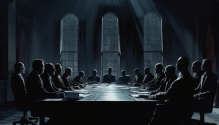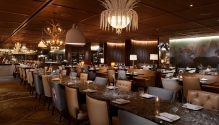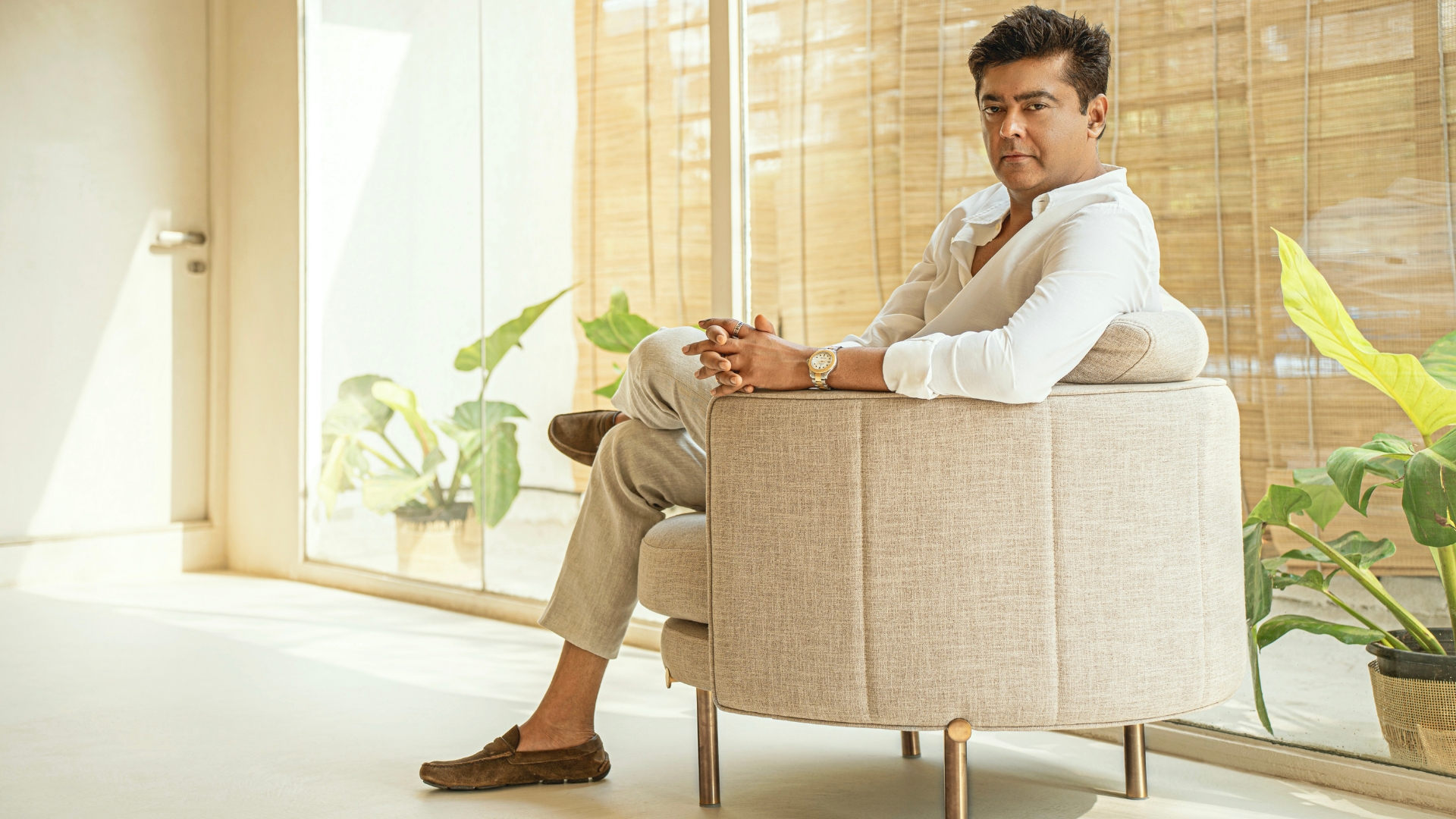Profit By Design
Architect and hospitality design specialist Bobby Mukherji discusses how due diligence and well-informed decisions will pave the way to a profitable hotel venture.
By SOH Edit Team
What makes certain hotels thrive?
Is it only the F&B and service? Or the design? Truth is, the success of a hotel venture is determined much before they become tangible, brick-and-mortar entities. To find out what these factors are, we turn to Bobby Mukherji whose firm Bobby Mukherji Architects (BMA) has delivered an enviable number of projects for national and international hotel brands, pan-India and in several international locations. Leveraging his considerable experience garnered while delivering successful projects for industry leaders, from Taj Hotels, Marriott International and Hyatt to Hilton and Lemon Tree Hotels, Mukherji comes up with guidelines on how owners can create hotel ventures with healthy bottomlines.
Be location-wise.
Be mindful of where the hotel will be built. Marquee brands need marquee locations. Having said that, each location will have its unique traits that can be leveraged by the right brand. For instance, you may have a fantastic location in a city but a top-tier resort brand may not be the right fit for it. Similarly, including, say, meeting rooms or business centres in resort locations such as a desert or an island just because a brand mandates it, is absurd.
Picking a brand vis a vis location is extremely important. This research and due diligence will mean expenditure—but it will also mean that you would have taken the first right step towards a successful venture.
Partnering right.
This is the overarching mantra that should set the tone for any venture of this nature. Whether it’s the brand itself, the design practitioner, the consultants, the contractors or the workforce that executes the design to its last detail, the quality of collaborative minds will finally determine the success of an owner-hotel partnership and, eventually, the hotel itself.
Do not hesitate to onboard good, solid consultants. They are the backbone of your project. Assign about 10-15% of the project cost as fees for this expertise. Most high-end hotel brands will present you their list of preferred design partners and other agencies, but some will give you a freehand for the same. Be extremely careful. Selecting a practitioner without the relevant hospitality experience will result in an expensive-to-operate, ill-designed establishment.
Brand first or project?
Most owners will get the brand on board first, after having done their due diligence — hopefully. But sometimes, things can unfold the other way around, too, when the owner woos brands with a fait accompli in the form of a project which has already reached a significant level of completion leaving enough scope for brand standards as per the respective brand. You can choose either route, but if you decide to take the latter, ensure that your consultants know their job well.
Listen to your experts.
You’ve hired them for a reason. They have the experience and the insights that you perhaps may not. Trusting top-notch consultants is the key to building a good hotel. Even seasoned hotel owners can slip up when diving into new ventures, and first-timers often overestimate their savvy to end up in a messy input overload. When the project is at risk, your expert may be uncomfortably upfront with his advice. Learn to take it on the chin. Hotel brands also lend a hand, ensuring that things stay on track.
The architect leads the way.
And depending on the quality of their professional expertise, the way can lead to hotel nirvana or a nightmare. This point also circles back to my emphasis on getting the right people on the team. For instance, the ll-day dining area of a massive, business hotel designed by an international architect was found woefully inadequate in size.
Imagine a situation when delegates from a large convention come down to breakfast and find no place to sit! As the interior designer for the project, I had to completely rework the entire floor plan and encroach into the kitchen, hallway and bar area.
In this case, the architect had completely missed out on a simple guest room-to-restaurant cover ratio—which is one of the thumb rules of hospitality design.
Similarly, a 400-room city-destination hotel in Rajasthan was designed with an inadequate lobby size of about 1,500 sq ft, quite incapable of handling the influx of large tour groups. I redesigned the layout and more than doubled the lobby to 4,000 sq ft by seamlessly flowing into the adjacent tea lounge and bar.
Retrospective civil changes and spatial surgeries such as the ones mentioned above are expensive and inflate the project cost significantly.
A far simpler alternative would be to hire an architect who specialises in the hospitality vertical right at the outset. Yes, they may cost more—after all, a hotel is a more complex being than an office or residential project, and requires commensurate investment of manpower.
But you will be assuredly protected from such ordeals.
International expertise.
Work with someone who has their finger on the pulse of the market and who will take the design to its intended end. By this logic, collaborating with an international architect or designer, who may not always understand Indian preferences and craftsmanship and be in a position to helm the project at all its stages, may lead to misaligned designs and diluted execution. Extending the statement further, partnering with an Indian design practitioner, who is familiar with the cultural nuances, the market and its challenges, has its benefits. If you are inclined to work with an international name, however, ensure that they have a full understanding of the market and the location, and possess a strong team to service the project. Irrespective of who you work with, value their presence. A complex, investment-heavy project such as setting up a hotel will require constant steering and timely correction. If this calls for several site visits from your chosen design partner, so be it. Relying solely on contractors and the project management team can lead to misinterpretation of the design and result in a substandard project.
Impact of the MEP man.
MEP (mechanical, electrical and plumbing) contributes to the subliminal part of a hotel experience. These are behind-the-scenes experts whose job, if they’ve done it right, is fundamental to a good guest stay. The proper water pressure and temperature for a refreshing shower experience; an even ambient temperature throughout the establishment; a general sense of comfort and convenience. Cut corners on the right MEP consultant, however, and complaints may start pouring in about unpleasant odours in toilets, water accumulation in shower stalls, hot and cold shower experiences, and hot and cold temperature zones throughout the hotel.
A good MEP agency will know potential pain-points right at the beginning of the assignment. For example, it will focus on ensuring uninterrupted electricity supply in Tier 2 and 3 cities which experience load-shedding, and pay special attention to indoor air quality in polluted cities—ultimately enhancing the guest experience and also saving the operating costs for the owner.
The specialist contractor.
It's crucial to prioritise quality when selecting execution agencies for hotel projects. From contractors to furniture manufacturers, everybody counts into a successful project completion.
There are, at the most, 15 top-tier hospitality contractors in India. Known for their exceptional work, they prioritise quality over everything else as they hold their reputation very close to their hearts. While their rates may be 10 to 20% higher than local contractors or sub-contractors, investing in their expertise is invaluable. If you are not in a position to engage someone from this pool, make sure your contractor of choice has worked on at least six hotel projects with proven and experienced agencies. Owners sometimes lean towards familiar names for what they think will be a comfortable working experience. These may be agencies who may have worked on their homes or offices — but this doesn't necessarily translate into expertise in hotels. Specialisation absolutely matters in this case.
Celebrate the craftsman.
He may be the last block in the human flow chart of a hotel project, but his contribution to the final, tangible product is immense. Think of them as a lapidarist working on a gemstone. If they don’t do their job well, the end result will be of greatly reduced value. A premium look demands top-notch execution.
The embodiment of the above statement is a leading leisure hotel group that utilises the Italian Botticino marble—not the most expensive stone—cleverly by employing skilled craftsmen. The result: surfaces that look incredibly luxurious and enhance the overall project. Remember, one of the costliest expenses in a hotel project is building and finishing. If you do not give due importance to execution, chances are your investment in materials will not fetch you the returns as expected.
Hardy hardware
Quality should be the sole criterion when you are selecting any element for a hotel project. This is true for fixtures and hardware as well. Any compromise in this regard results in immediate problems and long-term regrets. I've seen it firsthand, with one hotel experiencing an embarrassing lighting failure on its opening day due to the use of low-quality Chinese imports. Such shortcuts undermine the integrity of a project. Ensure technical lighting and drivers are sourced only from reputable suppliers and brands to guarantee long-term performance. Hardware with moving parts—door closers, hinges, drawer slider channels, and door lever handles—need to be robust and precisely engineered, rare qualities even in homegrown brands. A similar approach needs to be taken for air conditioning and vertical transportation systems, ensuring reliable after-sales support tailored to your location, especially in Tier 2 or 3 cities or remote resort areas.
Lighting, landscape and art, the powerful trio.
These three aspects can truly take the experience of a hotel several notches up. Lighting significantly enhances the ambience, making a space feel more upscale and atmospheric. And the best part is, the cost of employing this design tool effectively isn’t that much. Again, selecting trusted technical and decorative lighting companies as well as automation and dimming control brands will ensure lasting results, creating the desired ambience without frequent failures. Remember, in case of technical lights, it’s not about how the light looks, but what the light does.
While resorts tend to prioritise landscaping, many city hotels neglect the transition from the gate to the porch and the surrounding areas. Investing in landscaping can significantly enhance the overall appeal of a hotel property. It creates that crucial favourable first impression as a guest enters the hotel property, and sets the tone for their stay. Take a leaf out of Four Seasons Hotel Mumbai’s strategy. Located in a congested area, it creates a microcosm of serenity right from its driveway. The Leela Mumbai is worth emulating for similar reasons.
Well-curated art can connect with the guest intellectually, creating spatial pauses and conversation starters. It imbues the narrative with story-telling. In today’s age of simple, minimal shells, the right art can add a layer of sophistication—‘right’ being the operative word as there is no eyesore quite as disturbing as tasteless pieces. Therefore, engage reputable art consultants to procure pieces aligning with the project's location and brand, enriching its overall aesthetic and appeal.
Root the narrative.
Like all spatial design, a ‘placeless’ hotel that doesn’t tell you whether it’s in London or Leh, is boring. Geography, climate and culture can be place-markers within the spatial narrative, creating an environment that is interesting, even unique, and engaging. This is a point in favour of both, homegrown hotel brands and Indian design talent, who are far more familiar with these aspects. Conversely, many popular international and Western-oriented brands have rigid design guidelines, limiting flexibility. These brands insist on following design principles integral to their brand DNA—which may not always necessarily be the best thing for that project.
Strive for timelessness.
Your hotel can be modern, semi-classic, classic or heritage, but not faddish. Insist on a design that will stand the test of trends and time. This is not only an aesthetic decision but a smart business one. Something that has enduring appeal, need not go for frequent (and expensive) facelifts. If you manage to hit the bull’s eye on this one, you may well be on your way to creating a Grande Dame—a hotel that is an icon within the fabric of a place, and a destination unto itself (provided you hit bull’s eye on other factors such as service and F&B as well). I lean towards semi-classic and classic designs: this way, you are always dressed in that elegant tuxedo rather than bell -bottoms.
It’s business, after all!
Never lose sight of this fact. It's essential for owners to prioritise return on investment (RoI) and view hotels as long-term assets, allocating budget accordingly. Smart owners understand the importance of maximising every square foot's revenue potential. They avoid overspending on extravagant exteriors and focus on what truly matters: providing guests with a comfortable, functional space. Unnecessary grand lobbies or oversized spaces should be avoided. Instead, work on spaces that directly contribute to revenue while ensuring that indirect spaces also add value to the guest experience.


























